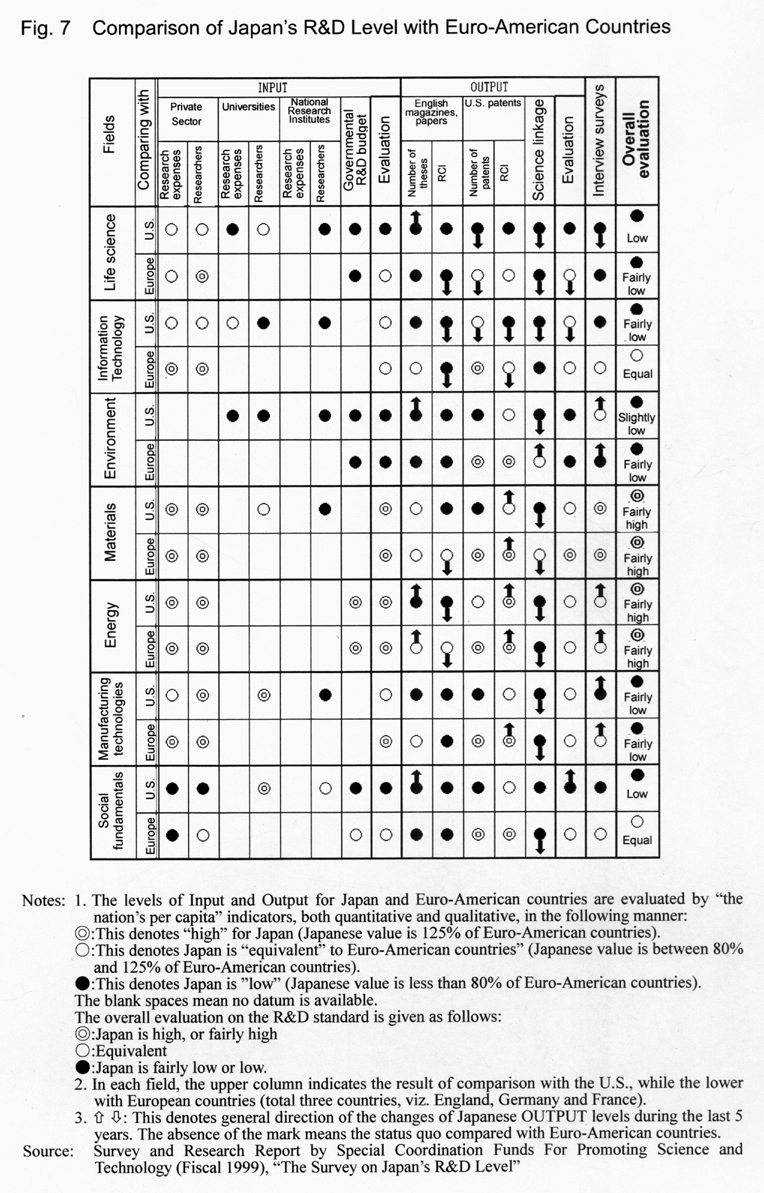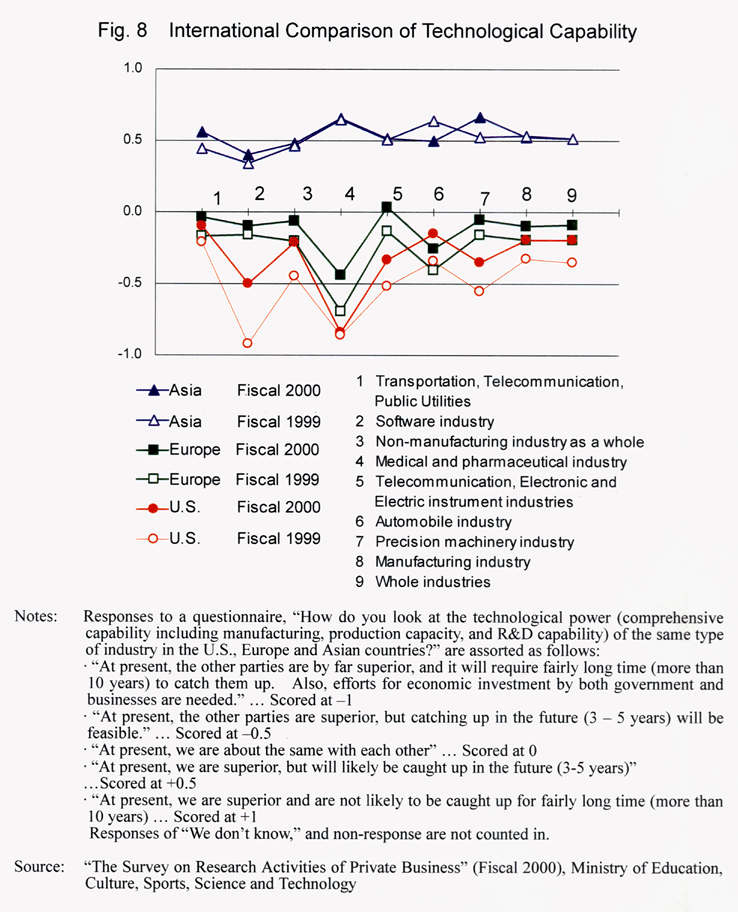| Home > Policy > White Paper, Notice, Announcement > White Paper > Annual Report on the Promotion of Science and Technology 2001 > Part1 Chapter1 Section4 | ||
![]() Regarding the Japanese R&D level, a survey report is available,
which is entitled "The Survey on Japan's R&D Level (March 2000)" .
The Science and Technology Agency conducted the survey to analyze those areas
that are both relatively close to industry and expected to have effects on society
( Fig. 7 ).
Regarding the Japanese R&D level, a survey report is available,
which is entitled "The Survey on Japan's R&D Level (March 2000)" .
The Science and Technology Agency conducted the survey to analyze those areas
that are both relatively close to industry and expected to have effects on society
( Fig. 7 ).

![]() Japan has very high potential in the fields of materials and
energy, and especially in the areas of base materials, and the technologies for
energy saving and environmental control. However, Japan needs to make efforts
for substantial upgrading of the level in the field of life science and information
technology other than information appliances.
Japan has very high potential in the fields of materials and
energy, and especially in the areas of base materials, and the technologies for
energy saving and environmental control. However, Japan needs to make efforts
for substantial upgrading of the level in the field of life science and information
technology other than information appliances.
![]() While we should maintain and expand the field in which Japan
has a high level, it is a national issue that the fields of weakness should be
reinforced under the prioritized policy.
While we should maintain and expand the field in which Japan
has a high level, it is a national issue that the fields of weakness should be
reinforced under the prioritized policy.
| (International Comparison of Technological Capability of Private Sectors) |
![]() According to "the Survey on Research Activities of Private
Sectors" (Fiscal 2000) of Ministry of Education, Culture, Sports, Science
and Technology, many private sectors have a feeling about the U.S. and Europe
that "the other parties are superior." The largest gap exists in the
fields of the most promising growth such as life science and information-related
industries in particular ( Fig.
8 ).
According to "the Survey on Research Activities of Private
Sectors" (Fiscal 2000) of Ministry of Education, Culture, Sports, Science
and Technology, many private sectors have a feeling about the U.S. and Europe
that "the other parties are superior." The largest gap exists in the
fields of the most promising growth such as life science and information-related
industries in particular ( Fig.
8 ).

![]() In each field, Japanese Private sectors feel that other Asian
countries are catching up with Japan.
In each field, Japanese Private sectors feel that other Asian
countries are catching up with Japan.
| (Prioritized Approaches of Japan) |
![]() In the field where we are positioned in a high level, we should
capitalize on our potential to produce creativity. We should also seek to secure
our international level in such field that other selected countries are running
ahead of us by prioritizing their approaches. That will enable us to make international
contribution.
In the field where we are positioned in a high level, we should
capitalize on our potential to produce creativity. We should also seek to secure
our international level in such field that other selected countries are running
ahead of us by prioritizing their approaches. That will enable us to make international
contribution.
![]() The Second-term Science and Technology Basic Plan has determined
on the following four key fields: life science, information technology, environment,
and material/nano-technology. In light of many countries rivaling each other
in these fields, we should also step up our potential in and capitalize on these
fields. Repercussive effects to other fields are also expected. Above all, these
are the fields that are indispensable for us to meet social demands and tackle
issues of global scale. To meet that end, we must make the appropriate allocation
of resources in accordance with this Plan.
The Second-term Science and Technology Basic Plan has determined
on the following four key fields: life science, information technology, environment,
and material/nano-technology. In light of many countries rivaling each other
in these fields, we should also step up our potential in and capitalize on these
fields. Repercussive effects to other fields are also expected. Above all, these
are the fields that are indispensable for us to meet social demands and tackle
issues of global scale. To meet that end, we must make the appropriate allocation
of resources in accordance with this Plan.
| Back to Top | MEXT HOME |